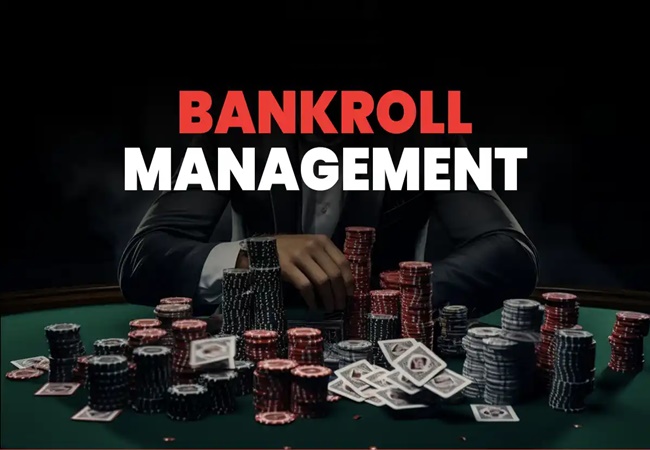How to Build Your Bankroll Playing Online Poker in India
Online poker has seen a massive surge in popularity across India in recent years. With platforms like PokerBaazi, Adda52, Spartan Poker, and others offering real-money games, tournaments, and attractive bonuses, more Indians are exploring online poker not just as a hobby, but as a potential source of income. However, winning in online poker consistently is not just about luck—it’s about skill, discipline, and bankroll management.
If you’re looking to build a sustainable bankroll playing online poker in India, this comprehensive guide covers essential strategies, mindset, Rummy games, and practical tips to help you move from novice to profitable player.

1. Understand What Bankroll Means
Your bankroll is the amount of money you’ve set aside exclusively for playing poker. It’s crucial that this money is separate from your regular savings or expenses. Think of your bankroll as your investment in the game—just like a trader wouldn’t use rent money to buy stocks, you shouldn’t use essential funds to play poker or Teen Patti Stars.
2. Start Small and Choose the Right Stakes
One of the biggest mistakes beginners make is starting at stakes that are too high. This exposes your bankroll to higher variance and risks early losses. In India, cash games often start as low as ₹1/₹2, and tournaments can cost as little as ₹10. Start with micro-stakes and build your skills and confidence gradually.
Use the “5% rule” for cash games—never risk more than 5% of your bankroll at a single table. For tournaments, stick to 1-2% of your bankroll per entry, especially considering the variance involved in MTTs (multi-table tournaments).
3. Take Advantage of Bonuses and Freerolls
Most Indian poker sites offer deposit bonuses, referral bonuses, and freeroll tournaments. These are excellent tools to build your bankroll without risking much.
- Freerolls are free-entry tournaments with real cash prizes. Playing regularly in freerolls can help you build an initial bankroll.
- Deposit bonuses often match a percentage of your deposit (sometimes 100%) and can be unlocked through play.
- Loyalty programs reward frequent players with cashback, merchandise, or tournament tickets.
Make sure to read the terms and conditions before relying on these offers, but when used correctly, they can significantly boost your bankroll without additional investment.
4. Focus on Skill Development
Poker is a game of skill over the long term. Invest time in improving your game. Learn basic strategies like tight-aggressive play, positional awareness, pot odds, and bluffing dynamics.
Use free or paid content to grow:
- Watch Indian pros or streamers on YouTube and Twitch.
- Join Indian poker forums or communities like India Poker Network or 2+2.
- Use apps like PokerStove or Equilab to study hand ranges and equity.
The more skilled you become, the more edges you will find, even at lower stakes.
5. Practice Good Bankroll Management
Bankroll management is crucial to surviving downswings. Even the best players go through losing streaks. Without proper bankroll discipline, a few bad sessions can wipe you out.
Here are a few essential bankroll management tips:
- Always play within your limits.
- Avoid chasing losses.
- Move up in stakes only after consistently winning over a large sample size (e.g., 20-30 buy-ins won at your current level).
- If your bankroll drops significantly, move back down to lower stakes.
This disciplined approach ensures you’re never playing poker with scared money and can focus on making optimal decisions.

6. Avoid Tilt and Play with a Clear Mind
Tilt is emotional decision-making, often caused by frustration, bad beats, or ego. It’s one of the biggest bankroll killers. Learning to control tilt is key to long-term profitability.
To avoid tilt:
- Take breaks during long sessions.
- Don’t play when tired, angry, or intoxicated.
- Accept variance as part of the game.
- Have a “stop-loss” limit per session (e.g., stop if you lose 3 buy-ins).
Keeping a poker journal or reviewing your hands after sessions can also help identify tilt patterns and emotional triggers.
7. Specialize and Stick to a Format
Poker offers various formats—cash games, sit & gos, tournaments, turbo events, and more. While versatility is great, focusing on one format initially helps you master the unique strategies involved.
For example:
- Cash games reward tight, disciplined play and post-flop skill.
- Tournaments are more swingy but can provide huge ROI with a small investment.
- Sit & Gos (SNGs) are fast-paced and good for learning push/fold strategies.
Pick one that suits your temperament and schedule, and try to specialize in that format until you’re consistently profitable.
8. Use Poker Tracking Tools (If Allowed)
Some poker sites in India allow HUDs (Heads-Up Displays) and tracking software like PokerTracker or Hold’em Manager. These tools provide valuable stats about your opponents and help you analyze your own play.
If your platform allows it:
- Use HUDs to identify weak players (high VPIP, low aggression).
- Track your win/loss trends over time.
- Review hand histories to find leaks in your game and understand how they may relate to the culture in India.
Even without software, many Indian sites now offer inbuilt tracking features—use them to your advantage.
9. Protect Your Online Bankroll
Cybersecurity is often overlooked. Ensure that your poker account is secure by:
- Using strong, unique passwords.
- Enabling two-factor authentication (2FA) if available.
- Avoiding public Wi-Fi when playing.
- Not sharing account details with anyone.
Also, stick to licensed and reputable poker sites that are regulated in India.
10. Keep Records and Treat It Like a Business
If you’re serious about poker, treat it like a side business. Track your sessions, wins/losses, and hours played. Use spreadsheets or tools like Poker Bankroll Tracker apps.
Benefits include:
- Knowing your true hourly rate.
- Identifying profitable games and formats.
- Understanding when it’s time to move up or down in stakes.
A professional approach ensures that you make calculated, data-driven decisions and not emotional ones.
Final Thoughts
Building a bankroll through online poker in India is absolutely possible—but it takes more than just playing well. It requires smart financial management, patience, emotional discipline, and a commitment to continuous improvement.
By starting small, learning consistently, and protecting your bankroll at all costs, you can enjoy the game while steadily climbing the stakes. And who knows—what starts as a ₹100 freeroll win could grow into a six-figure bankroll with the right approach.
Happy grinding and good luck at the tables!







